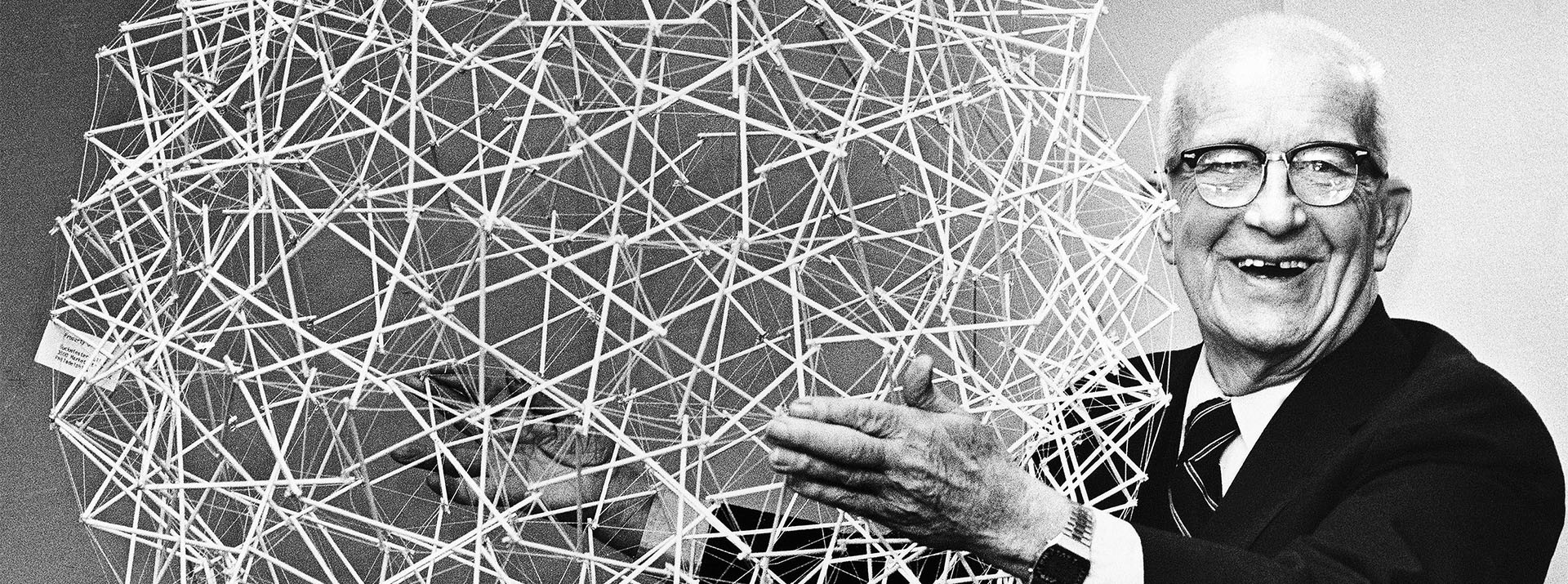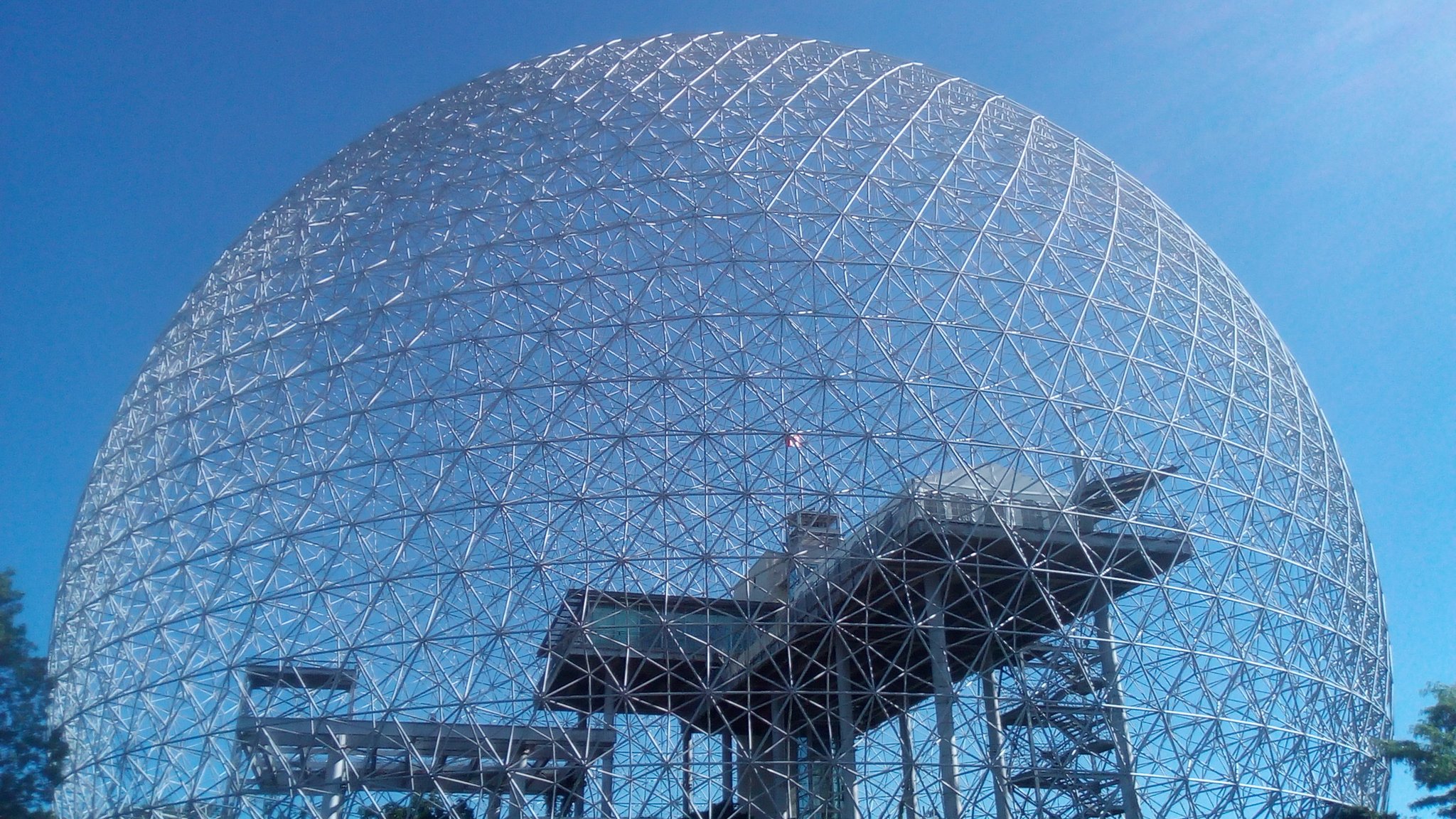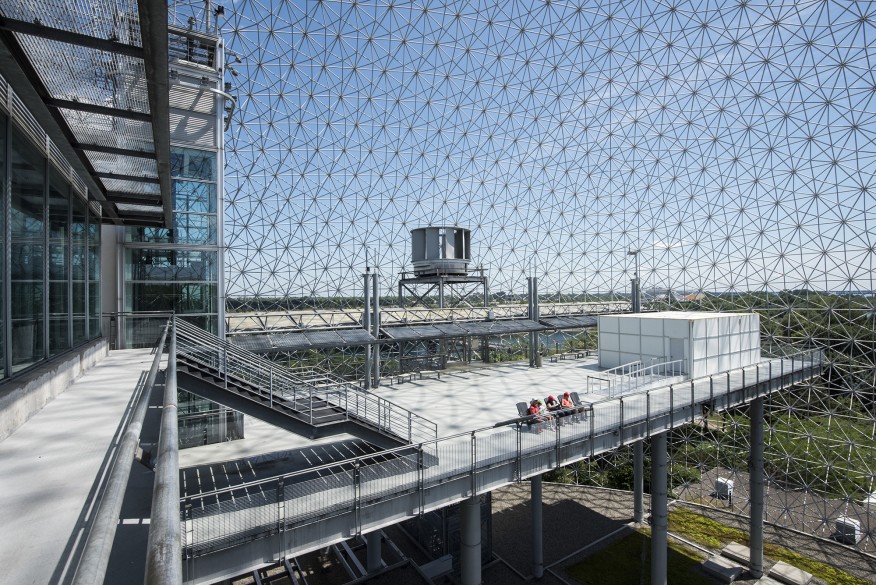Buckminster Fuller designed for a future we are yet to reach. His visions were so far ahead of the times, that they seemed more applicable to science fiction than the real world.
“I just invent, then wait until man comes around to needing what I’ve invented” – Buckminster Fuller
What is Buckminster Fuller best known for?
Born in Massachusetts in 1912, Buckminster Fuller is known for having way too many feathers in his hat. He is an architect, futurist, mathematician, public speaker, designer, artist, poet, philosopher and author all rolled into one. However, Fuller was expelled from Harvard University twice and is known for never fully completing his formal education.
Buckminster Fuller started a company with James Monroe Hewlett (Fuller’s father-in-law), which used a compressed fiber block to create modular houses. When the company faced financial difficulties, and Fuller was forced out – he focused on searching for design patterns that will solve the resource crisis that the world would eventually encounter. All his designs, inventions, talks, and books were factors that contributed to that search.
Fuller believed that for humanity to progress at a quicker pace, we would require to find ways to do more with less. His vision focused on using minimal resources considering the need of future generations. He concerned himself with the overall designs of human activity.
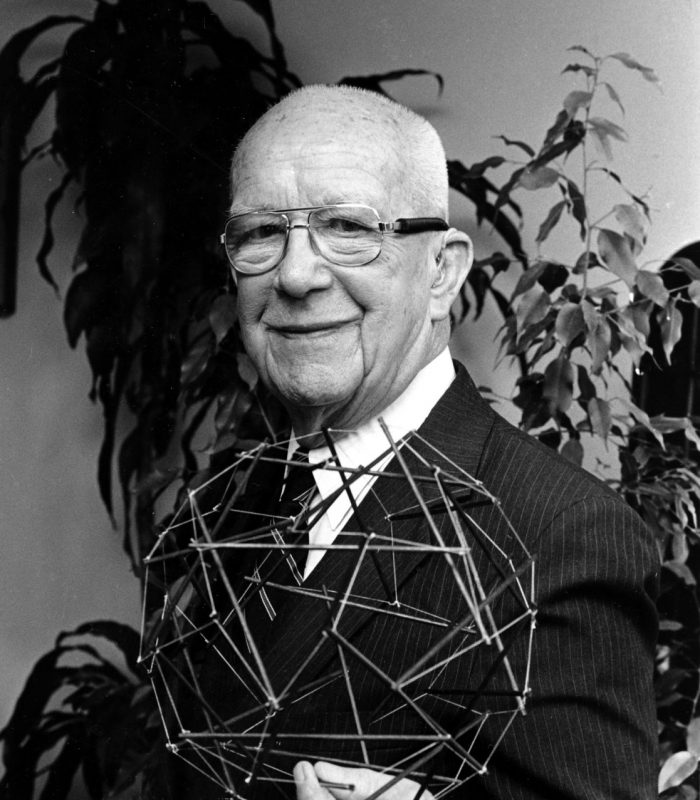
© Suzanne Vlamis
“A designer is an emerging synthesis of artist, inventor, mechanic, objective economist, and evolutionary strategist”
He spent almost a third of a century challenging and delighting designers all over the world. He became a household name with his Geodesic Dome. His popularity made scientists name the carbon molecule (which looks like the Geodesic Dome), a Fullerene.
Fuller published over 30 books and coined numerous terms like “Spaceship Earth”, “Dymaxion” and “Tensegrity”. The concept behind his idea of the universe did not fit with the usual definitions and patterns, so he had to come up with a whole new vocabulary to explain his thoughts.
The Dymaxion Concept
Fuller’s Dymaxion (a combination of “dynamic, maximum, and tension”) looked at the technology being used to make the most out of what was available. He concentrated on designing and creating projects that were stable, yet dynamic.
Dymaxion (which also comes from “Dynamism, Maximum and Ions”) also refers to the Maximum gain of Advantage from Minimal Energy Inputs. Fuller’s designs under this concept adhere to his vision of utilizing the least amount of energy to create the maximum gain. He also tried to realize the capabilities of all the materials and tried to ensure minimal or no wastage.
Fuller’s ideas come from believing that shelters could be a machine for living. It suggests that all the resources in the world must be at the disposal of man. Using all the resources that are available, mankind can easily progress by taking into account the capability and the potential of all the assets. Buckminster Fuller’s ideas for the Dymaxion concept spilled into real-world applications like the Dymaxion House, the Dymaxion Car, and the Dymaxion Bathrooms.
The Dymaxion House, 1927
The Dymaxion Concept looked to completely eliminate the “unpleasant phases” of life – such as constructing a house. The Dymaxion House was designed to be fully furnished, sold at the price of a car, and delivered to any location, within hours of placing the order.
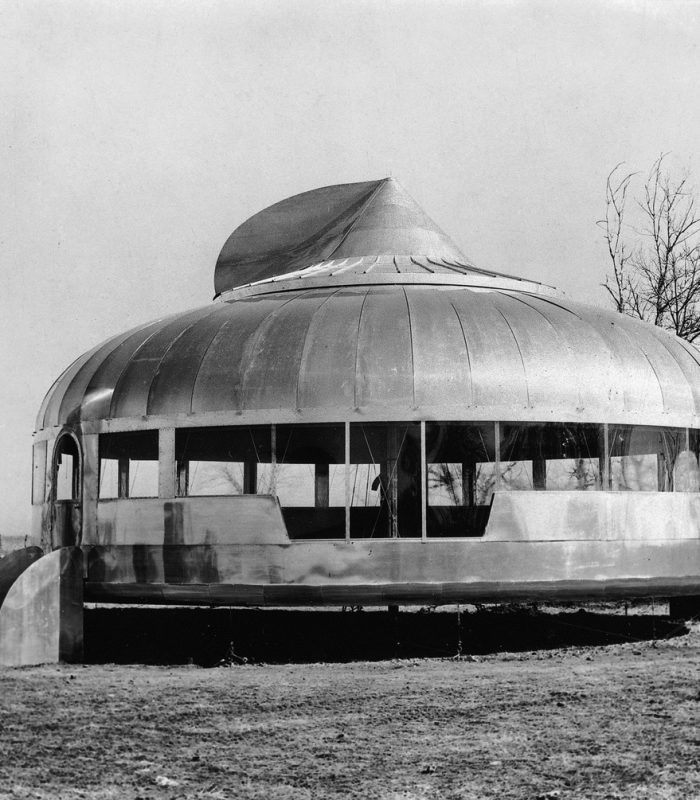
The Wichita House was built based on the Dymaxion prototype. via clublugosi.es
The smallest of the Dymaxion Houses has 2 Master Bedrooms, 2 baths, a study, kitchen, garage, workshop, living room, and sundeck. It is designed to be fully equipped with instruments for refrigeration, heating, and air conditioning. The Dymaxion Bathroom – which is patented by Fuller – has a shower that uses only one cup of water, and a toilet that consumes no water at all.
Only one Dymaxion house was constructed – in Kansas. The aluminum structure was built to withstand the tornadoes in Wichita. It is in the permanent collection of the Henry Ford Museum.
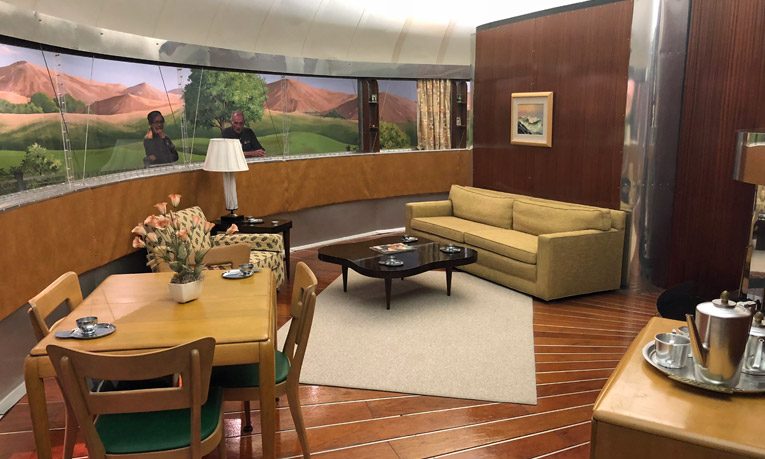
Courtesy The Henry Ford
While the independent Dymaxion House was spectacular, the 10 story apartment was revolutionary. It demonstrated the Fuller concept of a self-sustaining structure, completely. Fuller’s sketches illustrated his idea of the 10-story tower being transported by Zeppelins and installed wherever needed.
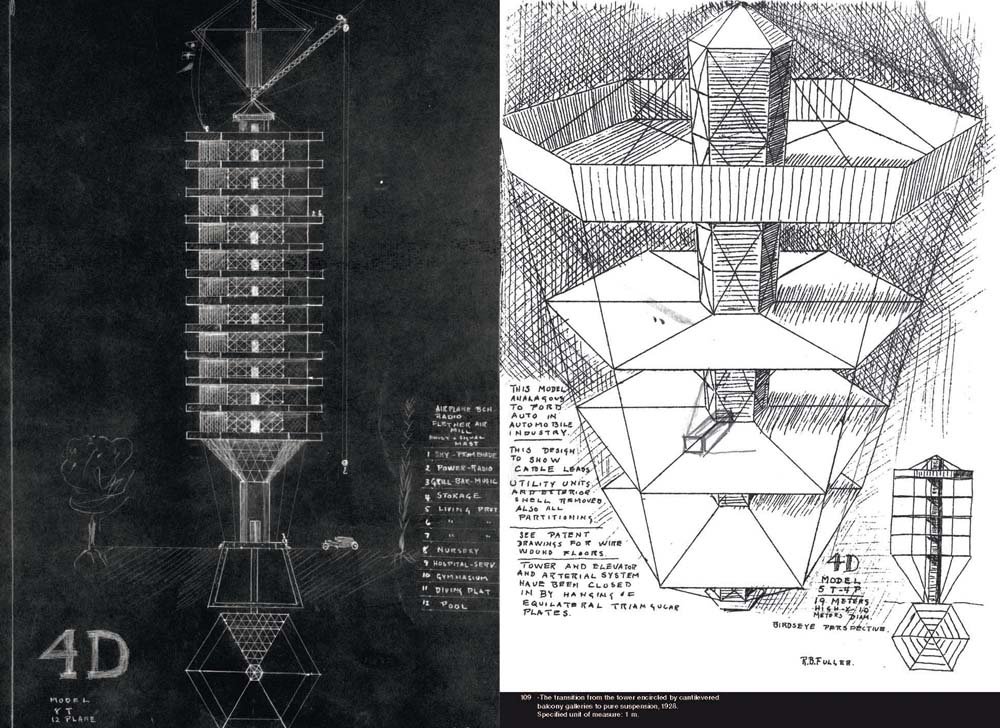
Courtesy of Lars Müller
Buckminster Fuller was not just designing an extraordinary structure, but he was also suggesting the creation of an industry that mass-produced houses. The idea of the Dymaxion House evolved at the onset of the industrial revolution. Dymaxion houses were envisioned to be delivered to every nook and corner of the world, by an industry similar to the telephone industry of today.
The Dymaxion Car, 1933
The Dymaxion Car was designed by Buckminster Fuller in 1927 and constructed in 1933. The idea behind the Dymaxion Car was that it would, one day, be used to fly as well as to drive on land. The Car was known for its efficient design. It could transport 11 people, run at 90 miles an hour with a mileage of 30 miles a gallon.
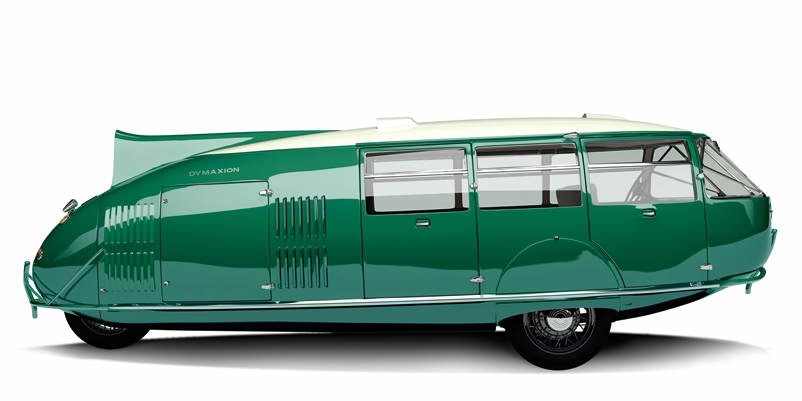
© Gregory Gibbons, Courtesy Ivorypress
One of the most terrifying features of the Dymaxion car was that it was mainly guided by the rear wheel. This made it extremely prone to accidents and other issues. As a result, only 3 prototypes were made, and the car was dubbed the “Fuller death-mobile”. While it was labeled too extreme to be produced in the 1930s, many of its features were adopted in present-day automobiles.
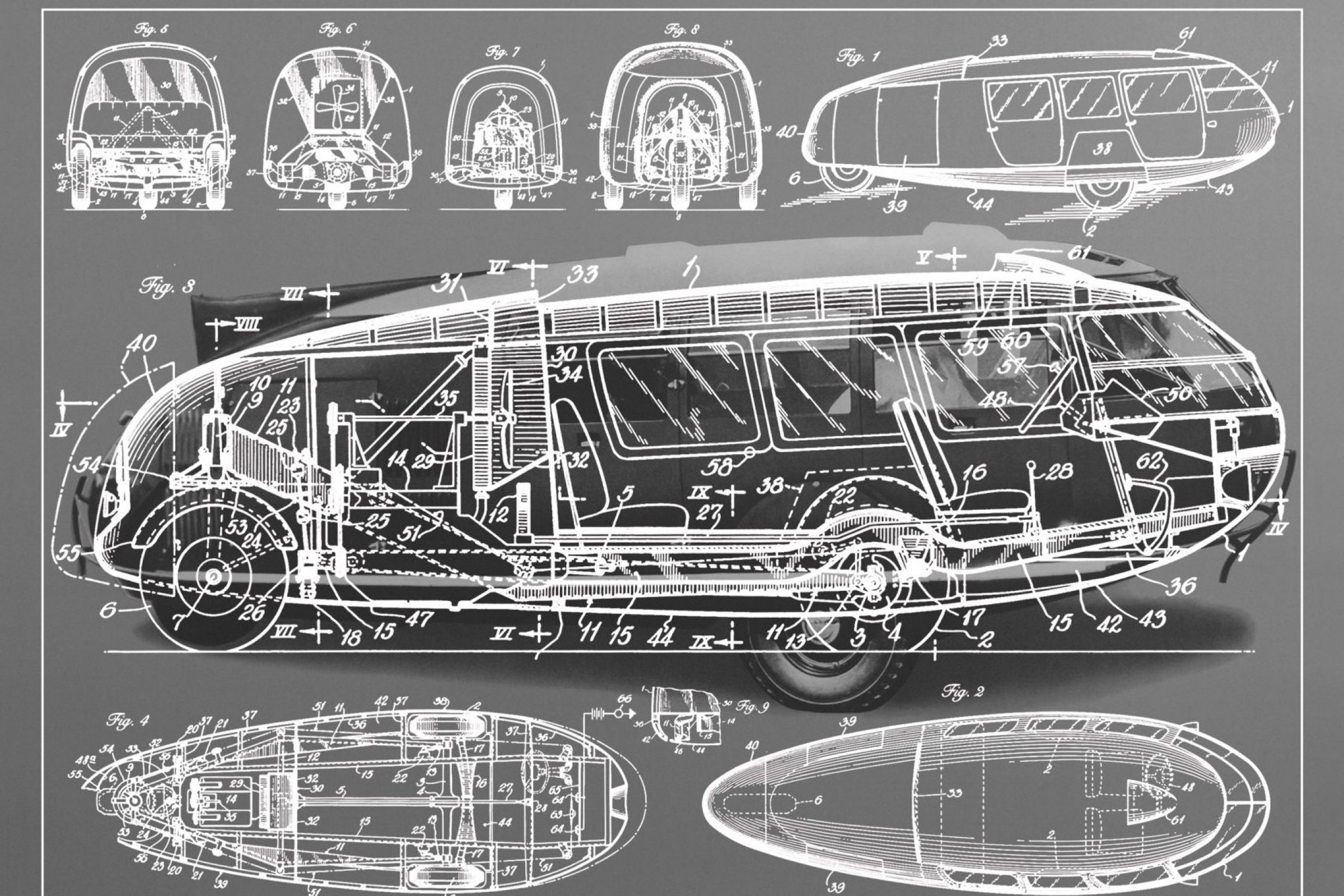
Courtesy Carl Solway
The Dymaxion Map, 1943
Buckminster Fuller decided to try his hand at other disciplines – the first being cartography. This resulted in the first two-dimensional map of the Earth which showed the surface without any distortions. He produced this map by projecting the world map onto a three-dimensional icosahedron, and then laid it flat.
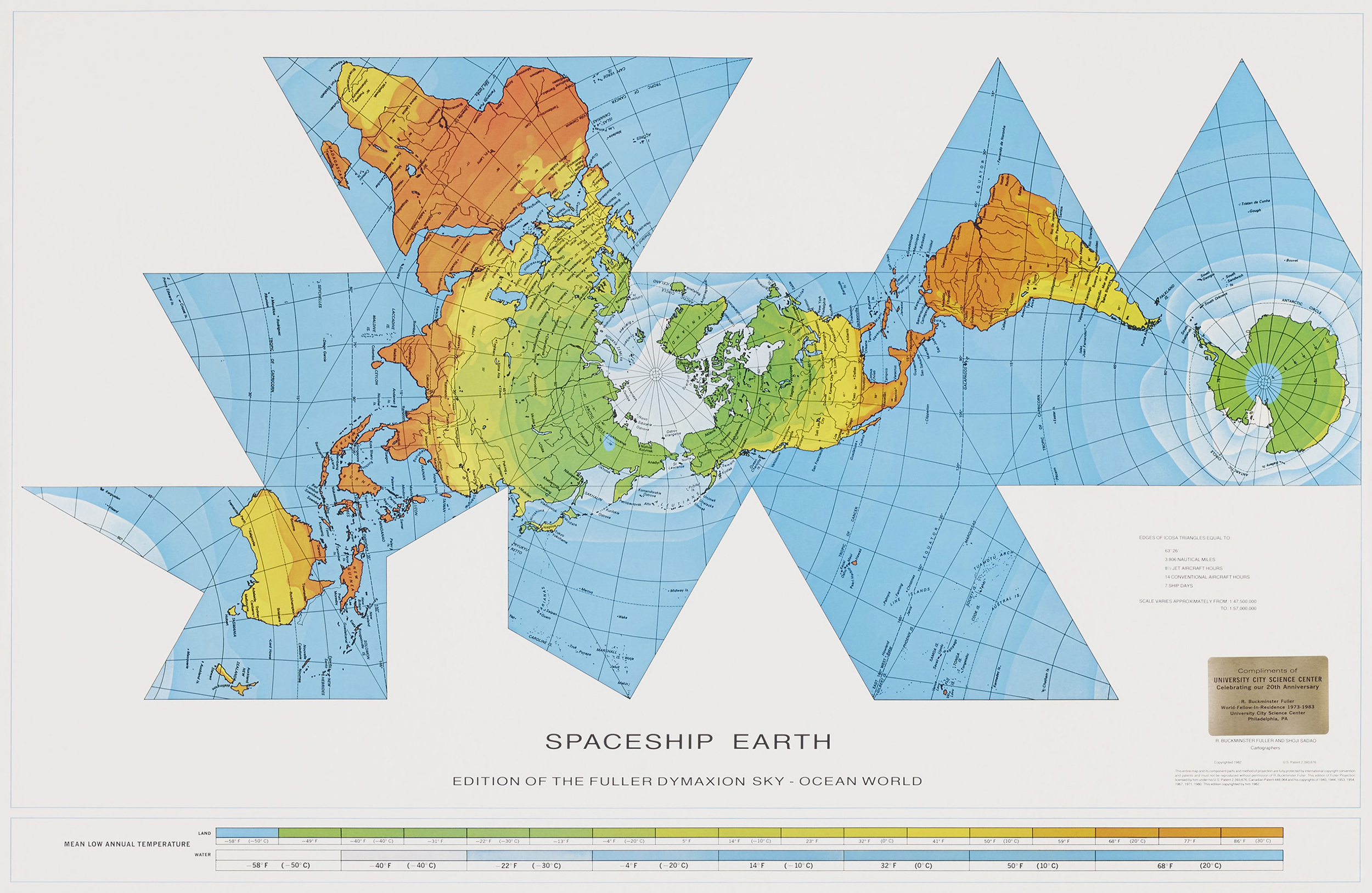
Courtesy Carl Solway Gallery
Fuller developed a vectorial system of geometry that he named the “Energetic- Synergetic” Geometry. Fuller discovered that using the basic shape of a tetrahedron along with an octahedron, the most economical structure could be designed. His concepts step out of the 90-degree associations and try to look at the different ways that dynamic and stable structures could be created.
The Geodesic Dome, 1954
Using the Energetic-Synergetic geometry, Fuller constructed the Geodesic Dome, the total strength of which increases in a logarithmic ratio to its size. As his work progressed, the world began paying more attention to him – and it resulted in the much-publicized, 1967 Exposition, Montreal Biosphere. Today, there are over 300,000 interpretations of the Geodesic Dome in the world, according to the Buckminster Fuller Institute.
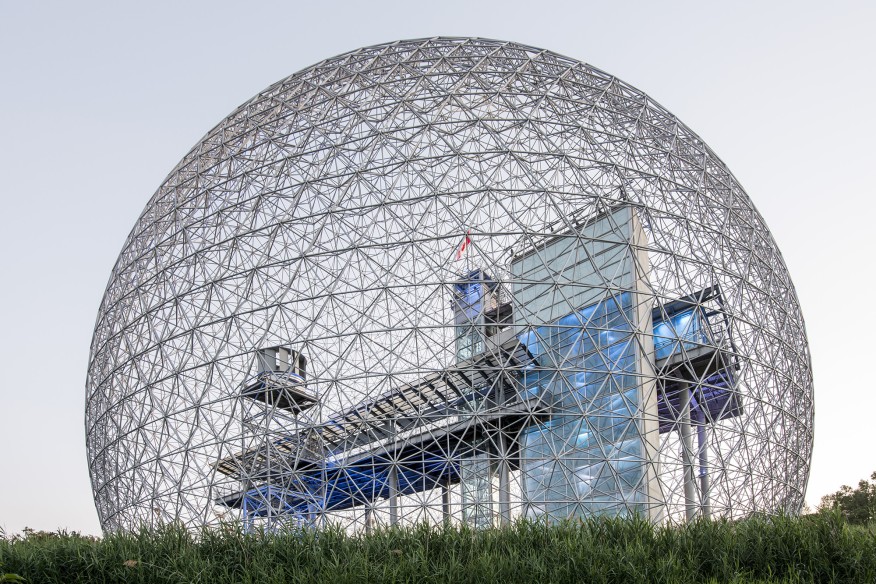
© Alex Fradkin
Interestingly, the Geodesic Dome had been designed 26 years before Fuller patented it. It was created by Dr. Walther Bauersfeld. Buckminster Fuller’s ability to see the minute connections between happenings, resources, needs, and sciences have resulted in extraordinary designs.
© Eberhard von Nellenburg
© Vincent Laganier
© Alex Fradkin
His other futuristic (and extremely revolutionary) designs include a 100 story tower garage that was to be an exhibit at the 1933 Chicago World Fair. He proposed that the floors for parking would be entirely supported using overhead cables. He also designed an omnidirectional vehicle – the 4D Vehicle – that could hop off the road, fly above, and settle back amongst the traffic.
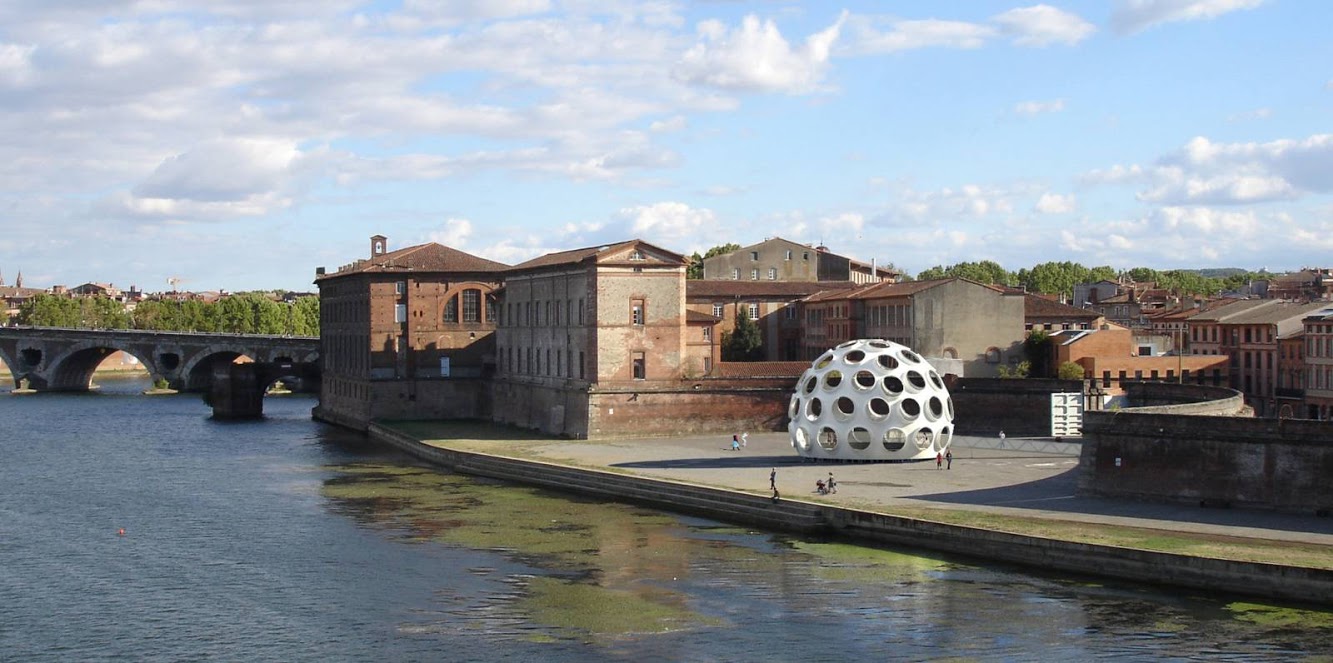
Fly’s Eye Dome, Courtesy of Toulouse Arts Festival
“When I am working on a problem, I never think about beauty but when I have finished, if the solution is not beautiful, I know it is wrong”
In a sense, Fuller’s ideas revolve around sustainability – gaining maximum from minimum. He talks about a future where verticality is more important because of the increased population, land prices, and reduced space. In the 1930s, he came up with solutions to the problems we are facing today. He was an early environmental activist.
Fuller’s futuristic visions, where we could do more with less, are yet to come to fruition. We are still a long way from Geodesic Domes, 11-person 3 wheeled cars, and houses that sustain themselves. But we can still get inspired by the “design scientist”, as he loved to call himself.


